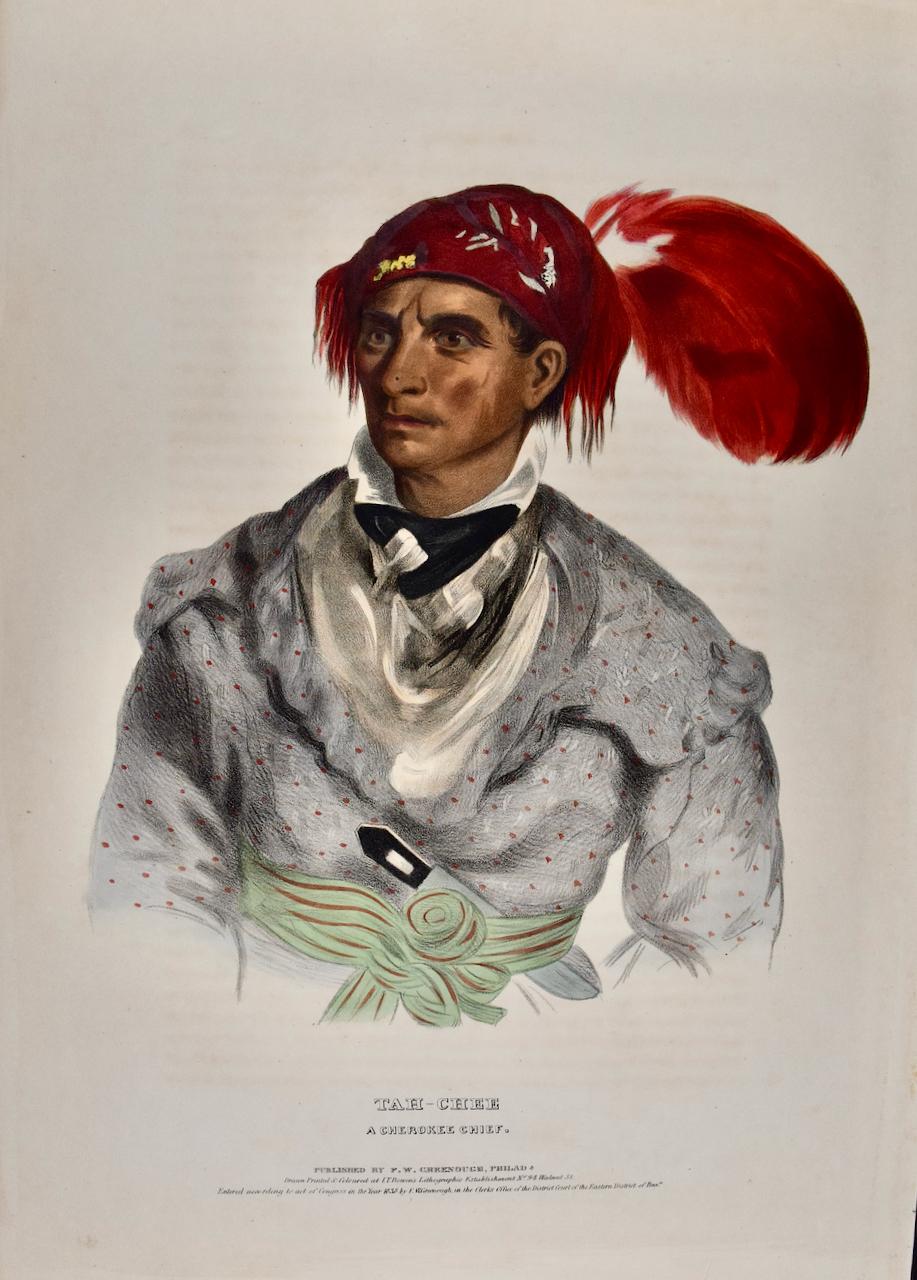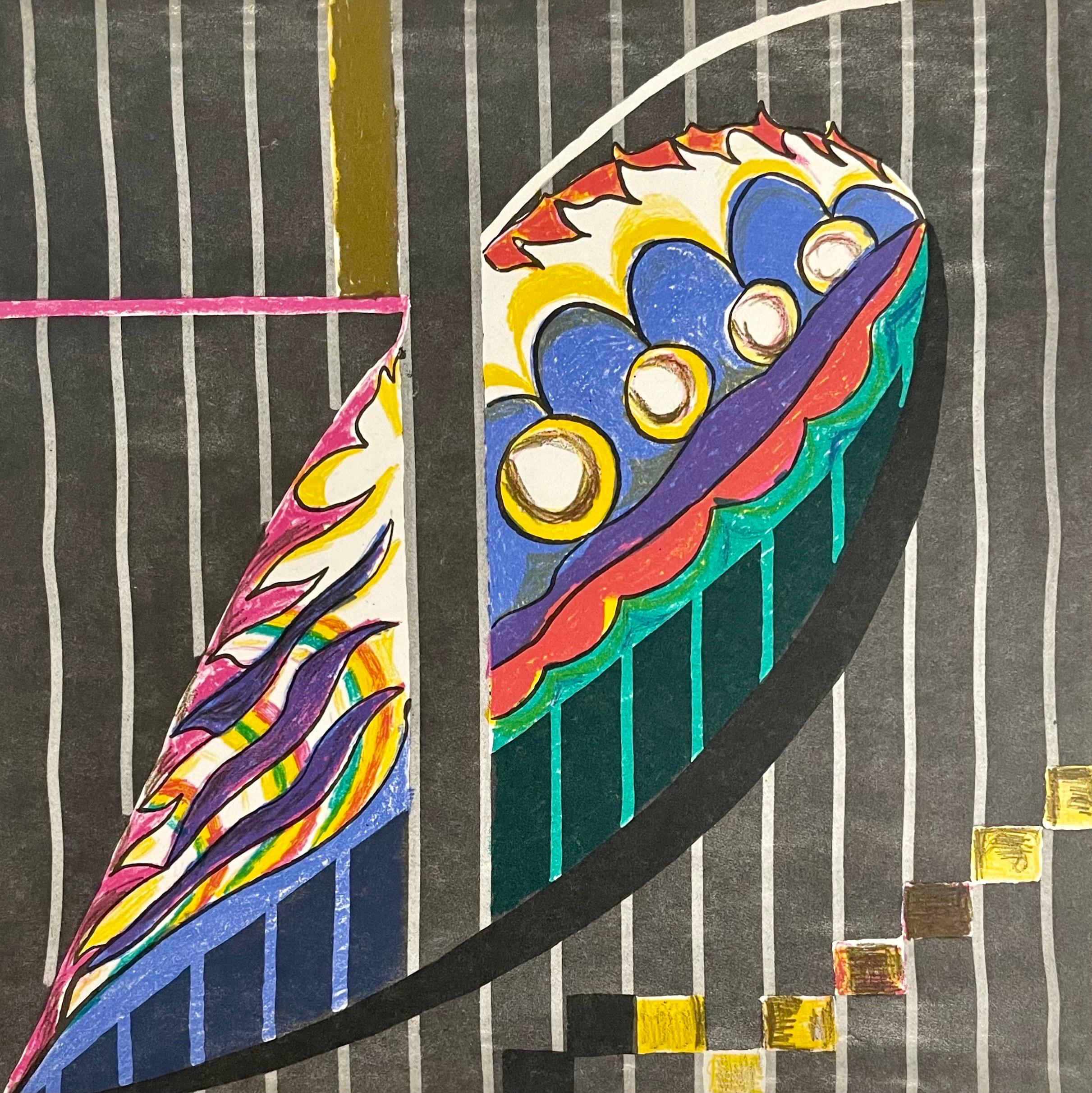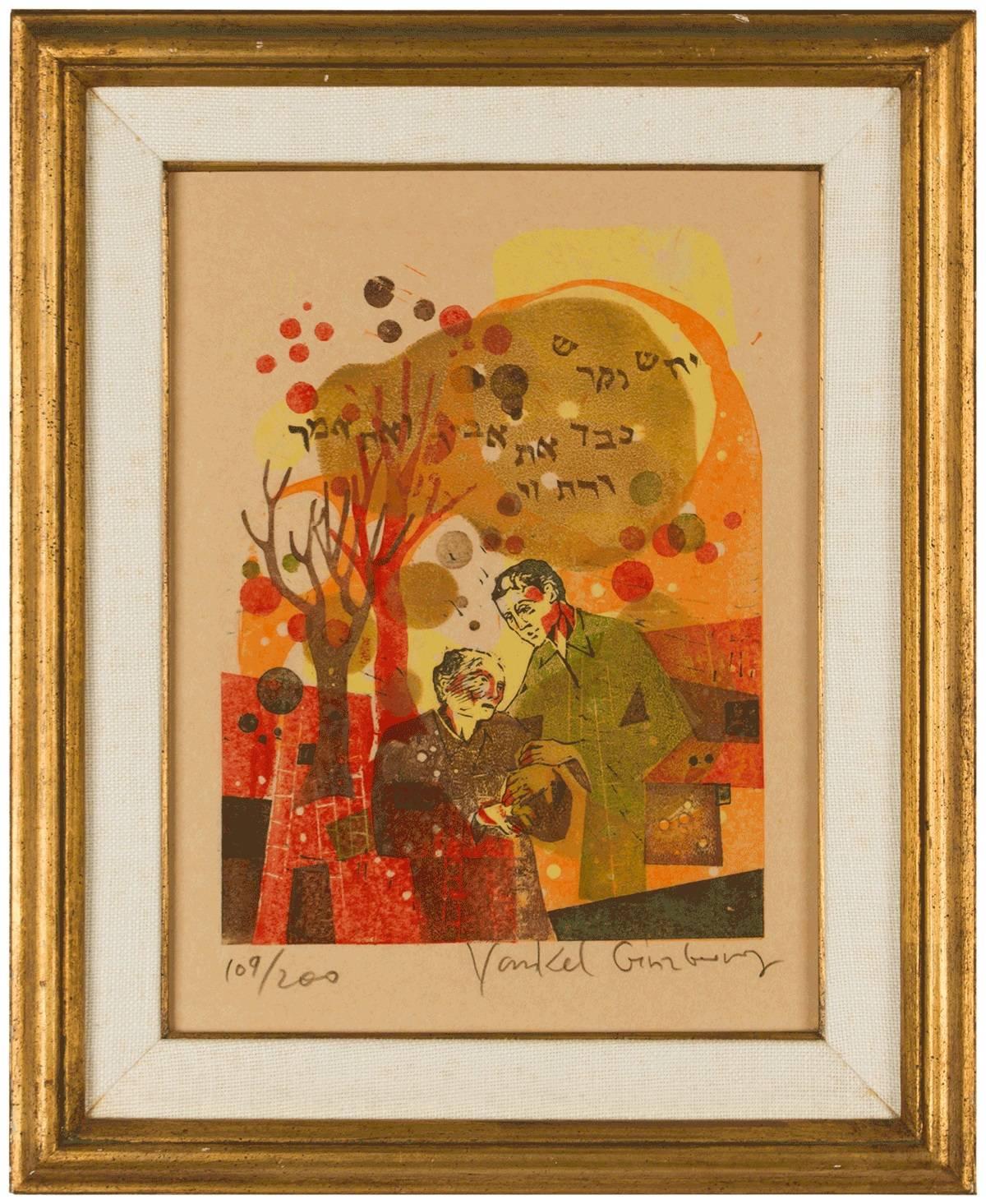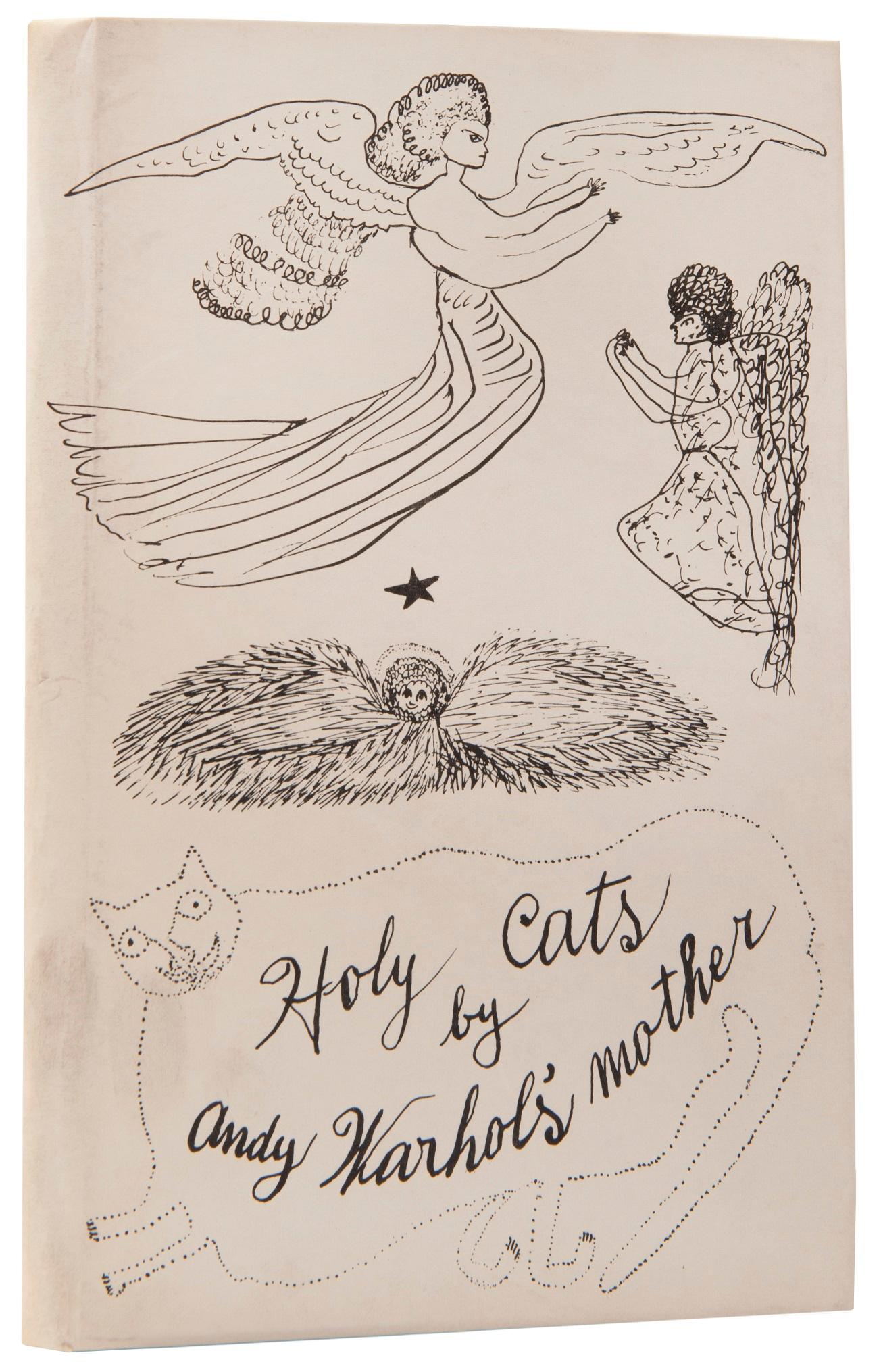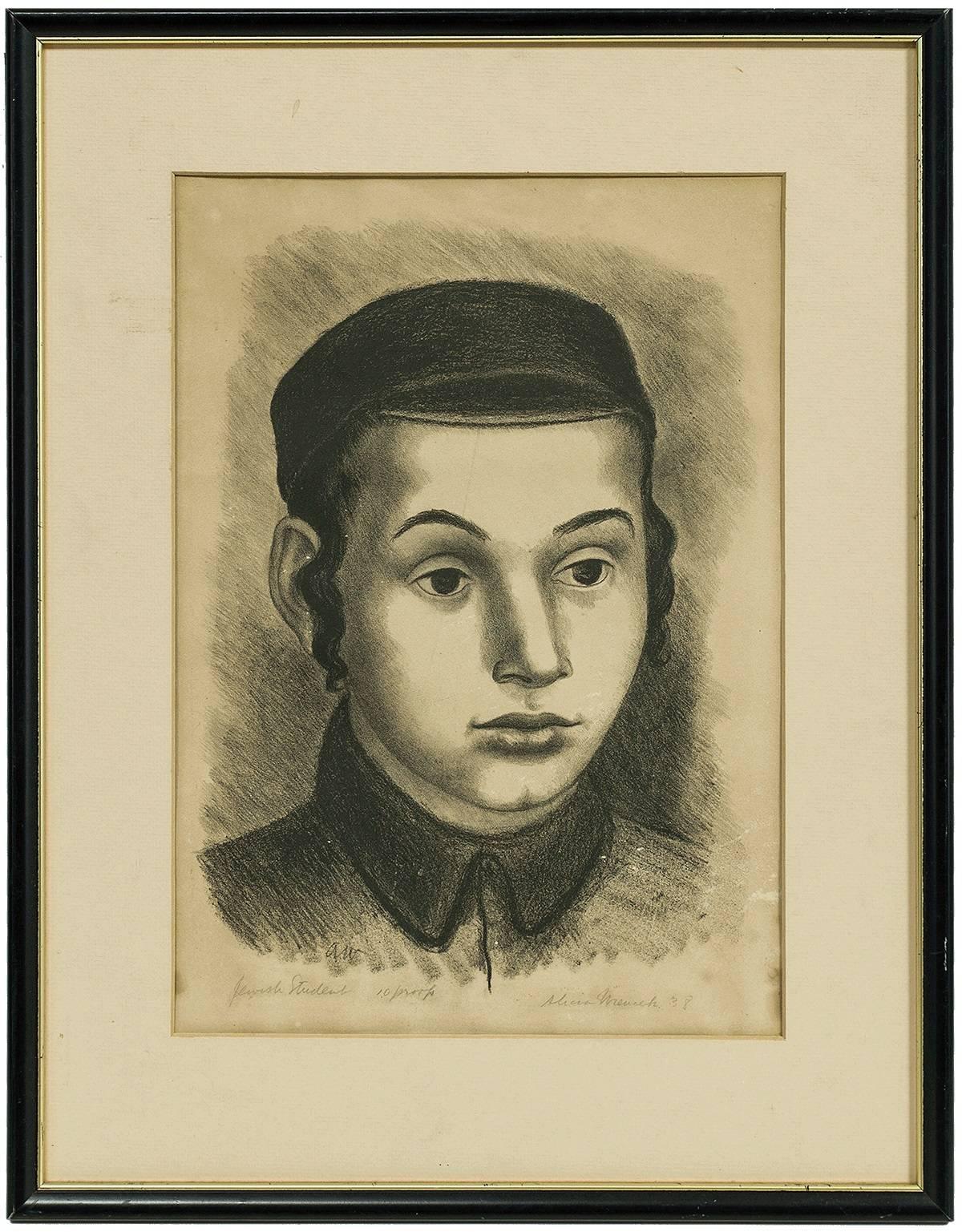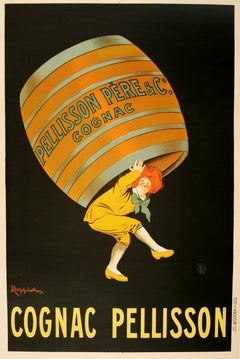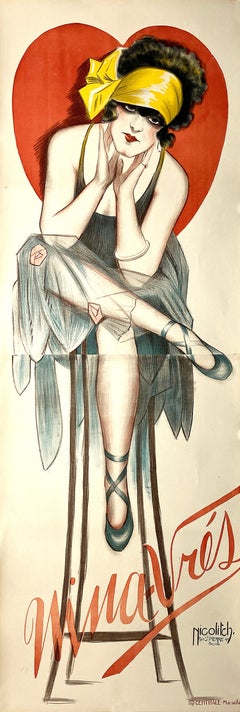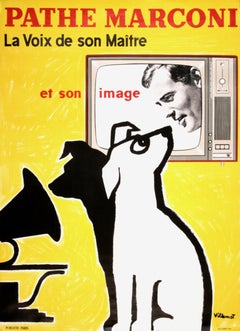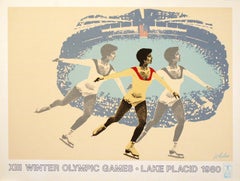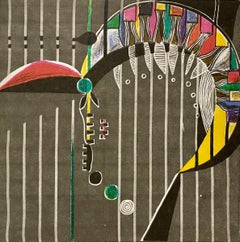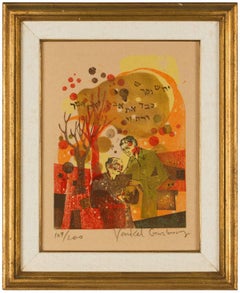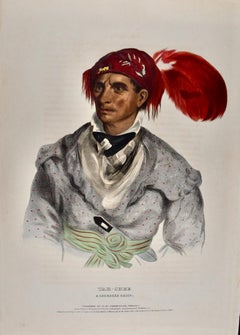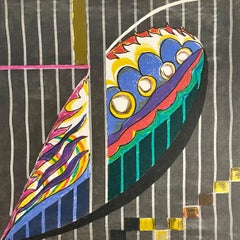Items Similar to Original Vintage Poster for Canadian Club Whisky C1950
Want more images or videos?
Request additional images or videos from the seller
1 of 5
UnknownOriginal Vintage Poster for Canadian Club Whisky C19501950
1950
About the Item
This original vintage poster for Canadian Club Whisky was created in the early to mid-20th century to promote one of North America's most iconic spirits. The poster features a refined composition, combining crisp typography with a prominently displayed bottle of Canadian Club, accompanied by a simple water or soda pairing—highlighting the brand’s positioning as both accessible and sophisticated.
Canadian Club was first distilled in 1858 by Hiram Walker in Windsor, Ontario, Canada. Known for its smoothness and mellow taste, the whisky quickly gained popularity beyond Canadian borders. By the turn of the 20th century, it had become the drink of choice among gentlemen in Europe and North America and even held a royal warrant from Queen Victoria. The brand was famously smuggled into the United States during Prohibition, further cementing its allure and reputation for quality.
This poster emphasizes the brand’s international reputation with the tagline "World Famous," speaking to its broad appeal and long-standing status as a staple in bars and households alike. The visual language is straightforward yet elegant, aligning with the mid-century advertising trend of elevating lifestyle through simple, high-quality products. The suggestion to enjoy the whisky "with water or soda" promotes its versatility—an ideal companion to both casual and refined settings.
This is an Original Vintage Poster; it is not a reproduction. The poster is conservation mounted, linen backed, and in excellent condition. We guarantee the authenticity of all our posters.
- Creation Year:1950
- Dimensions:Height: 39.75 in (100.97 cm)Width: 26 in (66.04 cm)
- Medium:
- Period:
- Condition:
- Gallery Location:Boca Raton, FL
- Reference Number:Seller: 143321stDibs: LU2560216091272
About the Seller
No Reviews Yet
Vetted Professional Seller
Every seller passes strict standards for authenticity and reliability
Established in 1995
1stDibs seller since 2023
20 sales on 1stDibs
Typical response time: 3 hours
- ShippingRetrieving quote...Shipping from: Boca Raton, FL
- Return Policy
Authenticity Guarantee
In the unlikely event there’s an issue with an item’s authenticity, contact us within 1 year for a full refund. DetailsMoney-Back Guarantee
If your item is not as described, is damaged in transit, or does not arrive, contact us within 7 days for a full refund. Details24-Hour Cancellation
You have a 24-hour grace period in which to reconsider your purchase, with no questions asked.Vetted Professional Sellers
Our world-class sellers must adhere to strict standards for service and quality, maintaining the integrity of our listings.Price-Match Guarantee
If you find that a seller listed the same item for a lower price elsewhere, we’ll match it.Trusted Global Delivery
Our best-in-class carrier network provides specialized shipping options worldwide, including custom delivery.More From This Seller
View AllOriginal Vintage Leonetto Cappiello 1920's Cognac Pellisson Poster Small Size
By Leonetto Cappiello
Located in Boca Raton, FL
Cognac Pellisson is a French liquor poster from circa 1920, by famous poster artist Leonetto Cappiello. It is a typically whimsical Cappiello design featuring the oversized keg of Co...
Category
1920s Prints and Multiples
Materials
Lithograph
Original Vintage Nina Vres Poster Red Heart by Obrad Nicolitch c1920
By Obrad Nicolitch
Located in Boca Raton, FL
Sitting on a high stool, the pretty nightclub performer, Nina Vres, stares right into our eyes. The wide yellow hair scarf and red heart-shaped halo freezes our feet from walking awa...
Category
1920s Prints and Multiples
Materials
Lithograph
Original Villemot c1970 Poster Pathe Marconi with Dog
By Bernard Villemot
Located in Boca Raton, FL
In this whimsical design created by the gifted poster artist Bernard Villemot, we see the modern day dog admiring the voice and image of his master in the television screen. In the b...
Category
1970s Prints and Multiples
Materials
Lithograph
Lake Placid Winter Olympics 1980 Figure Skater - Linda Frattiano Original
Located in Boca Raton, FL
This original vintage poster was commissioned by the Olympic Organizing Committee to promote the Winter Olympic Games held in Lake Placid in 1980. The renowned American graphic artist, Dennis Wheeler, was commissioned to design the poster. This image features figure skater...
Category
1980s Prints and Multiples
Materials
Lithograph
Tennis - Exploding Ball Original Vintage Print by Luigi Castiglioni c1983
Located in Boca Raton, FL
Luigi Castiglioni (1936 - 2003) once said, "There is no need to show dedication, everybody [already] knows that it is inseparable from sports". Instead, he chose to highlight the qui...
Category
1980s Prints and Multiples
Materials
Lithograph
Original Vintage French Poster Old Manada Rum Featuring Green Man C1930
Located in Boca Raton, FL
So much has been said by experts about the joyful spirit of many vintage advertising posters and this image for Old Manada Rum is a great example of the style. Created by an anonymou...
Category
1930s Prints and Multiples
Materials
Lithograph
You May Also Like
Feminist Surrealist French Abstract Colorful Lithograph Print Myriam Bat Yosef
Located in Surfside, FL
Myriam Bat-Yosef
Surrealist abstract lithograph print in colorful abstract shapes and shades
Hand signed and dated 1971.
sheet measures 9.25 X 9.25 inches
The envelope and the Peter Buch poster is just for provenance and is not included in this sale.
Myriam Bat-Yosef, whose real name is Marion Hellerman, born on January 31, 1931 in Berlin, Germany to a Jewish family from Lithuania, she is an Israeli-Icelandic artist who paints on papers, paintings, fabrics, objects and human beings for performances. Myriam Bat-Yosef currently lives and works in Paris. In 1933, her family fleeing the Nazi Holocaust, Miriam Bat-Yosef emigrates to Palestine and settles in Jaffa. In 1936, she suffers a family tragedy, her father, militant Zionist, is called to fight, still recovering from an operation of appendicitis. The incision will become infected, antibiotics did not exist yet, and her father will die in the hospital after 9 months of suffering.
Myriam and her mother leave Palestine to live in Paris for three years. French is Myriam's first school language. In 1939, still fleeing Nazism, she returned to Palestine, leaving France by the last boat from Marseille. She moved to Tel Aviv with her mother, aunt and maternal grandmother.
In 1940, she began attending the Academy of Fine Arts in Tel Aviv and took her name as an artist, Bat-Yosef, which means Joseph's daughter in Hebrew, as a tribute to her father. In 1946, Myriam graduated as a kindergarten teacher but wanted to be an artist. Her mother enrolled her in an evening school to prepare a diploma of art teacher. At 19, she performs two years of military service in Israel.
In 1952, with a pension of $50 a month that her mother allocated, she went to study at the Beaux-Arts in Paris. To survive, she has several activities while studying. In 1955, she had her first solo exhibition, at the Israeli Club on Wagram Avenue in Paris. Many artists, such as Yaacov Agam, Yehuda Neiman Avigdor Arikha, Raffi Kaiser, Dani Karavan and sculptors Achiam and Shlomo Selinger attended the opening .
In 1956, she enrolled at the School of Fine Arts in Florence. This is where she meets the painter Errô. They share an icy studio in winter. Myriam moves to Milan with friends. She organizes a joint exhibition with Erro, one room each, at the Montenapoleone gallery. Her works are admired by the sculptor Marino Marini and the painters Renato Birolli and Enrico Prampolini. Myriam and Erro exhibit in Rome, Milan, Florence and meet many personalities: Alain Jouffroy and his wife, the painter Manina, Roberto Matta and his wife Malitte, textile artist who was one of the founders of the Pompidou Center. Back in Paris, Myriam and Erro get married, which allows Myriam to avoid being called into the Israeli army during the Suez Canal War.
In 1957, Myriam and her husband went to Iceland. Myriam works in a chocolate factory. Having enough money, she starts producing art again. She exhibited in Reykjavik's first art gallery. She meets the artist Sigridur Bjornsdottir, married to the Swiss painter Dieter Roth .
In 1958, Myriam and her husband leave for Israel. They exhibit in Germany, then in Israel. Back in Paris, the couple became friends with artists of the surrealist movement, such as Victor Brauner, Hans Bellmer, the sculptor Philippe Hiquily, Liliane Lijn, future wife of Takis and photographer Nathalie Waag. Erro and Myriam have a daughter on March 15, 1960, named Tura, after the painter Cosmè Tura, but also close to the Icelandic Thora or the Hebrew Torah. Bat-Yosef’s complex trajectory throughout the 20th century is linked as much to the transnational history of what was for a time called the School of Paris as it is to a certain legacy of Surrealism. Her work features the same idea of resolving antinomies that also defined the spirit of surrealism, and is enhanced with her readings of the Kabbalah and her spiritual grounding in Taoism. However, while there are reasons for her approach to be associated with the process of the ready-made, it is important to consider the immediate intrication of these works with her practice of performance, during which the body itself is also painted – a feminist response to Yves Klein’s Anthropometries (1960) and an echo of the happenings which Jean-Jacques Lebel organised at the time in Paris.
In 1963, Erró told Myriam that if she wants to be a painter, she can not be his wife. Myriam chose to be a painter and the couple divorced in 1964. Since that time, Myriam Bat-Yosef has exhibited in many countries: Europe, United States, Japan, etc.
Although long in the shadows, the work of Myriam Bat-Yosef has been greeted by many artists and personalities: Anaïs Nin, Nancy Huston, André Pieyre of Mandiargues, José Pierre, René de Solier , Jacques Lacarrière, Alain Bosquet, Pierre Restany, Sarane Alexandrian and Surrealist André Breton who, after a visit to her studio, confided to having been intrigued by its phantasmagorical dimension. She was included in the book Pop Art and Beyond: Gender, Race, and Class in the Global Sixties by Mona Hadler and Kalliopi Minioudaki. Extract "World Citizen, Artist of the Pop Era Sarah Wilson; Why do we know so little of Myriam Bat-Yosef, the most important female Israeli artist of the Pop era? Issues of identity and sexuality feature constantly in her work. She exhibited internationally from Reykjavik to Tokyo; she had two shows at Arturo Schwarz’s famous Dada/surrealist gallery in Milan; she participated in feminist art events in Los Angeles. Above all, in 1971, she conceived Total Art, a Pop Gesamtkunstwerk inside and outside the Israel Museum, Jerusalem. Painter, performer, and installation artist, she was also a lover, wife, and mother. Of Lithuanian-Jewish descent, she was close to the family of philosopher Emmanuel Levinas. An émigré in Paris she would repudiate a national passport, participating in Garry Davis’s short-lived “World Citizens” movement. She continues the lineage of women surrealist artists: Valentine Hugo, Leonor Fini, Dorothea Tanning, Leonora Carrington, Unica Zürn, Jane Graverol, Toyen, Alice Rahon...
Category
1970s Surrealist Abstract Prints
Materials
Lithograph
Lithograph "Honor Thy parents" Judaica Hebrew Print
By Yankel Ginzburg
Located in Surfside, FL
Yankel Ginzburg, Kazakastani/American (1945 - )
Genre: Modern
Subject: People
Medium: Lithograph
Surface: Paper
Dimensions w/Frame: 19 1/2" x 16"
Yankel Ginzburg
Yankel Ginzburg was born Yuri Zhukov in 1945 in Alma-Ata, capital of the Kazakhstan Republic near the Chinese border. His parents were both Russian Army...
Category
20th Century Contemporary Figurative Prints
Materials
Lithograph
Tah-Chee, Cherokee Chief: 19th C. Folio Hand-colored McKenney & Hall Lithograph
By McKenney & Hall
Located in Alamo, CA
This is an original 19th century hand-colored folio-sized lithographic portrait of a Native American entitled "Tah-Chee, A Cherokee Chief", from McKenney and Hall's 'History of the Indian Tribes of North America'. It was lithographed by J. T. Bowen after a painting by Charles Bird King and published by E. C. Biddle in Philadelphia in 1838.
Tahchee's name translates to Dutch in Cherokee, and he became known as William Dutch. He was born in 1790 in the Cherokee Nation, which is now in a portion of Alabama. Tahchee became known as a skilled warrior and leader among his people, and he was eventually appointed as a chief of the Cherokee Nation "Old Settlers". During his time as chief, Tahchee was a rival of the Osage people and he worked to protect the Cherokee people and their land from encroachment by white settlers. He was a strong advocate for maintaining Cherokee sovereignty and cultural traditions, even as pressure mounted from the United States government to remove the Cherokee from their ancestral lands. In 1838, Tahchee and many other Cherokee people were forcibly removed from their homes in what is known as the Trail of Tears...
Category
Mid-19th Century Naturalistic Portrait Prints
Materials
Lithograph
Feminist Surrealist French Abstract Colorful Lithograph Print Myriam Bat Yosef
Located in Surfside, FL
Myriam Bat-Yosef
Surrealist abstract lithograph print in colorful abstract shapes and shades
Hand signed and dated 1971.
sheet measures 9.25 X 9.25 inches
...
Category
1970s Surrealist Abstract Prints
Materials
Lithograph
Salvador Dali - Erotic Grapefruit - Original Hand-Signed Lithograph
By Salvador Dalí
Located in Collonge Bellerive, Geneve, CH
Salvador Dali - Erotic Grapefruit - Original Hand-Signed Lithograph
1969
Dimensions: P. 57 x 37 cm
Sheet: 75 x 56 cm
Handsigned, EA (Epreuve d'Artiste)
Excellent Condition
Reference...
Category
1960s Surrealist Still-life Prints
Materials
Lithograph
1971 Modernist Lithograph Redhead Pop Art Mod Fashionable Woman Richard Lindner
By Richard Lindner
Located in Surfside, FL
RICHARD LINDNER (American. 1901-1978)
Hand Signed limited edition lithograph with blindstamp
Publisher: Shorewood-Bank Street Atelier for the Skowhegan School of Painting and Sculpture
29.25 X 22 inches
Richard Lindner was born in Hamburg, Germany. In 1905 the family moved to Nuremberg, where Lindner's mother was owner of a custom-fitting corset business and Richard Lindner grew up and studied at the Kunstgewerbeschule (Arts and Crafts School since 1940 Academy of Fine Arts). From 1924 to 1927 he lived in Munich and studied there from 1925 at the Kunstakademie. In 1927 he moved to Berlin and stayed there until 1928, when he returned to Munich to become art director of a publishing firm. He remained there until 1933, when he was forced to flee to Paris, where he became politically engaged, sought contact with French artists and earned his living as a commercial artist. He was interned when the war broke out in 1939 and later served in the French Army. In 1941 he went to the United States and worked in New York City as an illustrator of books and magazines (Vogue, Fortune and Harper's Bazaar). He began painting seriously in 1952, holding his first one-man exhibit in 1954. His style blends a mechanistic cubism with personal images and haunting symbolism. LIndner maintained contact with the emigre community including New York artists and German emigrants (Albert Einstein, Marlene Dietrich, Saul Steinberg). Though he became a United States citizen in 1948, Lindner considered himself a New Yorker, but not a true American. However, over the course of time, his continental circus women became New York City streetwalkers. New York police uniforms replaced European military uniforms as symbols of authority.At a time when Abstract Expressionism was all the rage, Lindner’s painting went against the current and always kept its distance. His pictorial language of vibrant colours and broad planes of colour and his urban themes make him a forerunner of American Pop Art. At the same time, he owes the critical tone of his paintings to the influence of European art movements such as Neue Sachlichkeit and Dada. His first exhibition did not take place until 1954, by which time he was over fifty, and, interestingly, it was held at the Betty Parsons Gallery in New York, a venue associated with the American Expressionists. From 1952 he taught at the Pratt Institute, Brooklyn, from 1967 at Yale University School of Art and Architecture, New Haven. In 1957 Lindner got the William and Norma Copley Foundation-Award. In 1965 he became Guest Professor at the Akademie für Bildende Künste, Hamburg. His Ice (1966, Whitney Museum of American Art) established a connection between the metaphysical tradition and pop art. He did work on Rowlux which was used by a number of pop artists (most notably Roy Lichtenstein)The painting shows harsh, flat geometric shapes framing an erotic but mechanical robot-woman. His paintings used the sexual symbolism of advertising and investigated definitions of gender roles in the media. While influencing Pop Art (Andy Warhol, Tom Wesselmann and Claes Oldenburg amongst others) his highly colourful, hard-edge style seems to have brought him close to Pop Art, which he rejected. Nevertheless, he is immortalised on the cover of the Beatles record "Sgt. Pepper’s Lonely Hearts Club Band" (1967) as a patron of the pop culture. He also did a tapestry banner with the Betsy Ross Flag...
Category
1970s Pop Art Abstract Prints
Materials
Lithograph
